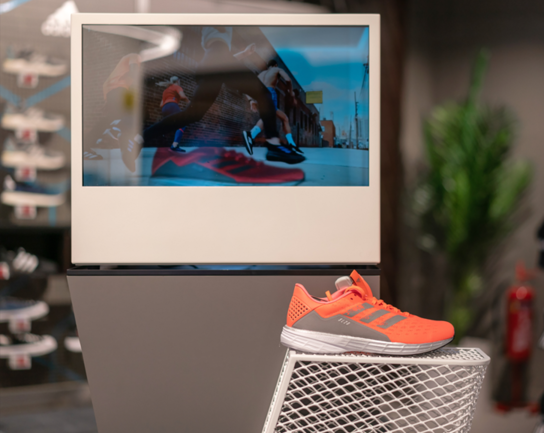FY25 results ahead of expectations
As shown in Exhibit 12, CARD’s FY25 results were modestly ahead of our prior forecasts.
CARD enjoyed a good FY25 with c 6% revenue growth to c £543m and broadly comparable
rates of growth between H1 and H2, which translated into a similar rate of growth
in adjusted PBT, to £66m from £62.1m in FY24, and therefore resulting in an unchanged
margin of 12.2%.
The greatest absolute contribution to growth was from cardfactory stores, a reflection
of its scale in the group, while partnerships demonstrated the strongest rate of growth,
c 31% y-o-y, helped by the acquisitions of Garlanna and Garven, which provided three-quarters
of the absolute growth of partnerships.
Higher wage costs, a lower effective foreign exchange rate on cost of goods sold and
a one-off impact for the closure of Getting Personal led to a 50bp reduction in gross
margin to 35.7% from 36.2%.
The decline in gross margin was mitigated at the normalised operating profit level
by the company’s productivity and efficiency programme, which helped to offset the
inflationary headwinds.
Although the figures are skewed a little by the phasing of M&A activity in the year,
we can clearly see the seasonality of CARD’s FY25 results with 56% of cardfactory
stores revenue, 61% of group gross profit and 73% of group operating profit earned
in H2.
Following the reinstatement of dividend payments in FY24 with a total ‘annual’ dividend
of 4.5p per share, CARD declared total dividends of 4.8p per share in FY25 with a
25%:75% split between the interim and final dividends. In both years, the dividend
cover was 3x adjusted earnings, at the top end of the indicated range for dividend
cover, with management targeting regular and progressive cash returns as part of its
capital allocation policy. We have amended our future forecasts for dividends to be
consistent with dividend cover of 3x. As we show in the cash flow and balance sheet
section below, management is entering a period where it has significant flexibility
in how it deploys its capital.
H126 revenue growth consistent with guidance and typical seasonality of profitability
CARD’s H126 revenue growth of c 6% to c £248m was consistent with the growth reported
through FY25 and towards the top end of guidance for FY26. However, the drivers of
the growth were slightly different than in FY25:
- cardfactory stores revenue growth of 2.9% compares with its c 6% growth during FY25.
On a like-for-like basis, H126’s growth of 1.5% compares withthe c 3–4% growth through
FY25, and reflects the more challenging backdrop that has weighed on retail sales
more generally, and the softer footfall through the summer when the weather was unseasonably
hot. During the period, 13 net new stores were added, taking the total number of stores
above 1,100 for the first time (ie to 1,103 by the end of H126). The company continues
to see a growing contribution from gifts and celebration essentials, quantified at
53.4% of sales in H126 from 52.5% in H125 and 51.4% in H124.
- Management’s focus on higher-priced and more profitable personalised products, which
entails an initial reduction in the number of products on offer, shows in the c 11%
reduction in cardfactory.co.uk’s revenue to c £3m in H126.
- Partnership revenue growth to £16.5m from £6.6m in H125 includes the first-time contribution
from the acquisitions of Garven and Garlanna (acquired in the later stages of FY25)
of £9.8m, and double-digit organic growth as underlying revenue increased from £2.4m
in H125 to £2.8m in H126.
The 360bp reduction in product margin, which includes the price of goods, freight,
carriage and packing, from 70.1% in H125 to 66.5% in H126, broadly reflects changes
in business and product mix as well as the intra-period changes of the individual
cost lines. Over the long term, management expects that changes in product mix (ie
more non-card products) and in business mix (ie a growing contribution from partnerships)
will enhance both sales and cash profits, but will be dilutive to percentage margin.
Management has worked hard to mitigate the inflationary cost pressures faced in H126,
and the lower margin includes some timing influence from range activity ahead of the
key trading period in H226. On a constant currency basis, the decline in product margin
is modestly lower, at 270bp, when an unrealised foreign exchange loss of £3.4m is
excluded.
The reported gross margin includes store and warehouse wages, property costs and other
direct costs. In aggregate these costs grew by 4% y-o-y in H126, below CARD’s revenue
growth in the period, and were therefore incremental to the reported gross margin,
partially offsetting the decline in product margin. Perhaps most noteworthy among
the line items here was the almost 5% growth in store and warehouse wages as the significant
increases in the National Living Wage (+9.8% from April 2024 and +6.7% from April
2025) and changes to employers’ National Insurance contributions (increases in the
rates payable and reductions in the threshold at which contributions are payable)
were offset by efficiencies from CARD’s multi-year ‘Simplify and Scale’ productivity
and efficiency programme.
Below gross profit, there is further evidence of the benefits accruing from the ‘Simplify
and Scale’ programme in the 2.6% underlying decline in operating expenses, such that
the company’s definition of underlying operating profit was only £1.3m lower than
H125’s £21.5m.
Management quantified the realisation of £9m of synergies in H126 from the ‘Simplify
and Scale’ programme through the streamlining of operations (including in-sourcing,
printing and distribution of store merchandising materials) and optimisation of warehousing
and agency labour that have delivered a 9% efficiency in stores, and the optimisation
of ranges and pricing. There are further plans to mitigate the ongoing inflationary
headwinds in H226, with a total inflationary headwind of more than £20m expected by
management for FY26, equivalent to growth of about 4.4% y-o-y. H226 will see further
benefits from the H126 investment in the new point-of-sale tills and automating support
centre back office processes, as well as a relentless focus on range development.
As a reminder, inflationary pressures have a disproportionate effect on H1 results
given the seasonality of the business and phasing of the benefit accruing from the
self-help initiatives.
In addition to the unrealised hedging loss, included in product margin, which is treated
as an adjusting item, CARD recognised £1.7m of acquisition-related transaction costs
for funkypigeon.com and an incremental £0.6m amortisation of acquired intangibles
for the acquisitions of Garven and Garlanna. The combined cost of these items, £5.7m,
took reported operating profit to £14.5m from £21.5m in H125.
To demonstrate management’s confidence in the outlook for the year, the interim dividend
was increased to 1.3p per share, from 1.2p per share in H125, growth of over 8%.


































